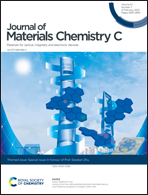Abstract
The molecular spinterface is an ideal platform to realize multistate storage in organic spin valve (OSV) devices. However, as an effective strategy to enhance the conductivity and modify the spinterface, molecular doping has rarely been reported in vertical OSV devices, and the effect of artificial doping induced spinterface is not clear yet. Herein, we fabricated a F4TCNQ-doped polymer spin valve with a stacking structure of La2/3Sr1/3MO3 (LSMO)/poly(3-hexylthiophene-2,5-diyl) (P3HT)/tetrafluoro-tetracyanoquinodimethane (F4TCNQ)/Co/Au, and found a significant improvement in conductivity and the magnetoresistance (MR) ratio. According to the characterization of interfacial states and investigation of half spin valves, it was determined that F4TCNQ was doped in the form of free radicals and created a spin-dependent hybrid interfacial state (SDHIS). Such a SDHIS can exhibit an extra interface magnetoresistance (IMR) effect imposed on the standard giant magnetoresistance (GMR) effect. This interfacial doping strategy shows great potential for application in future multistate molecular spintronic devices and provides a new insight into the mechanism of radical-induced molecular spinterface.

- This article is part of the themed collection: Special issue in honour of Daoben Zhu


 Please wait while we load your content...
Please wait while we load your content...